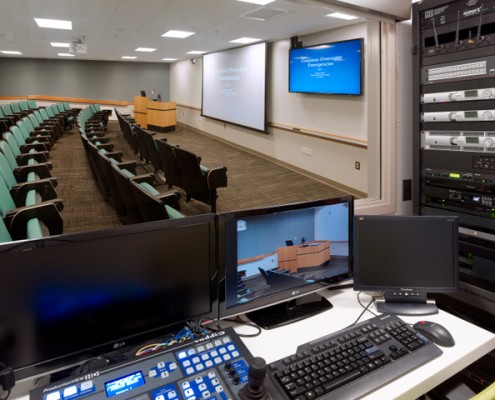While configuring audio-visual systems, the criticality of cabling and signal transmission is vital. Proper infrastructure does more than just ensures that audio and video quality are maintained but also guarantees the reliability of the entire system. In any AV setup, whether for a school, office, or home theater, streamlining the wiring can lead to better performance and reduced technical glitches. This guide will outline essential strategies for improving cable management and interfacing in AV solutions.
The first step in optimizing audio-visual setups is to select the suitable cables for the application. Different types of cables perform specific purposes, so selecting appropriate ones is important. For example, HDMI cables are standard for delivering high-definition visual and sound signals. In opposition, balanced audio cables like XLR can eliminate signal noise in sound systems. It is vital to consider the length and grade of these cables, as longer cables can result in signal loss. By purchasing premium cables that suit the precise needs of the AV design, users can significantly improve total performance.

Another key strategy is structuring the wiring effectively. A systematic wiring system not only seems more professional but also improves functionality. Using cable management solutions like clips, ties, or sleeves can help maintain wires orderly and avoid tangling. This layout also makes it easier to diagnose any issues that may occur. Labeling each cable according to its purpose or origin can save time during installations or maintenance. A well-labeled layout helps technicians quickly track connections, which is especially valuable in multi-device systems with numerous devices.
Additionally, understanding the design of the space is vital for improving connectivity. The placement of components can impact how signals travel through cables. Positioning devices too far apart may call for longer cables or signal boosters, which can be expensive and reduce quality. It is helpful to map out the arrangement of equipment strategically, taking into account the proximity between devices and potential interferences such as walls or furniture. This intentional placement can limit issues related to signal loss and strengthen connectivity throughout the AV system.
Scheduled maintenance checks are another important strategy for supporting optimal functionality of AV cabling and connectivity. Over time, cables may become worn due to handling or wear and tear. Routinely inspecting all connections helps detect potential problems before they escalate into serious issues. Swapping out aged cables and cleaning connectors can preserve signal quality and support the system functions smoothly. Keeping a schedule for routine maintenance can help users manage this aspect of their AV infrastructure.
Finally, remaining aware about modern developments and standards is important for anyone involved in AV solutions. The explanation sector is rapidly evolving with improvements in technology that can improve integration and efficiency. Participating in training sessions, reading industry publications, or becoming a member of professional communities can deliver beneficial information into best practices and latest tools currently offered. By leveraging these advancements and integrating them to current systems, users can enhance their AV solutions consistently while guaranteeing they remain updated with industry state-of-the-art presentation technology integration progress.
In closing, optimizing wiring and AV performance in AV systems involves careful selection of cables, effective organization, thoughtful space layout planning, regular maintenance checks, and staying updated on industry innovations. By applying these methods, users can attain improved functionality and stability in their audio-visual setups, ultimately leading to a more enjoyable experience for everyone involved.